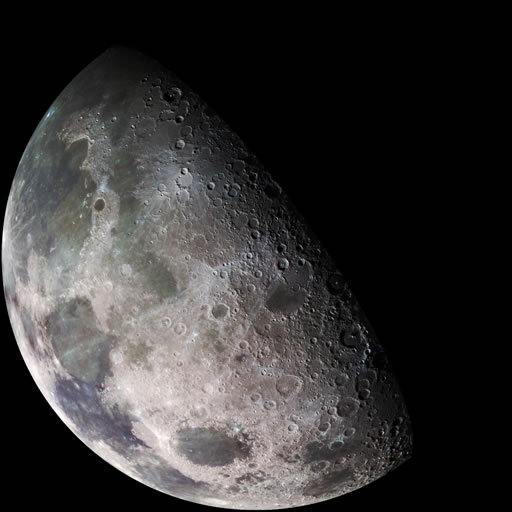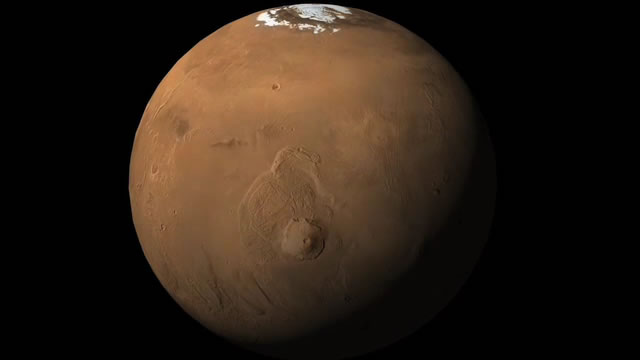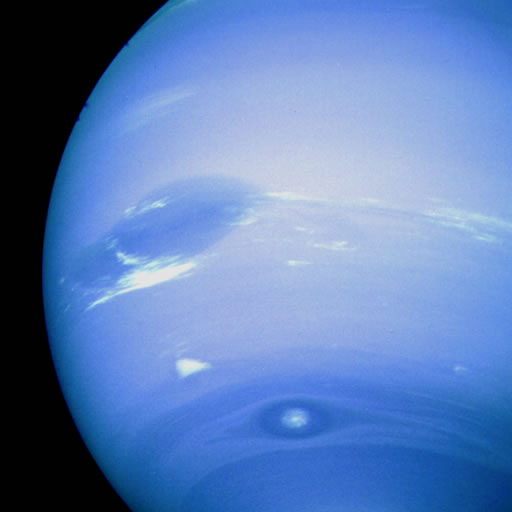How Do We Tell Distance By Radar?
For relatively nearby things, like airplanes, we can use radar waves to measure how far away they are. Radar waves are invisible waves that are created and detected by electronic equipment. They are like the radio waves that your radio or TV at home can receive. You cannot hear radio waves directly; but a radio or TV receiver can change them into the sounds that you enjoy listening to and images you can see.
OPTIONAL—VISUAL 6 (movie): Radar
Fade on an animated GIF illustrating the principle of radar.
Let’s make a model of radar waves to see how they can be used to tell how far away something is. Remember, real radar waves are invisible, and make no sound at all. First, let’s just make a wave, like at a football game.
Raise your arms after the person next to you raises theirs. When the wave gets to the end of the row, the last person must say “Bounce!” and the wave goes back the other way. When it gets back to the starting point, the first person says “Stop!” Let’s try it once for practice.
Designate a starting person. If students are sitting in several rows, designate the end of each row as a “Bounce!” point. If they are sitting in a circle, have the person next to the starting person “bounce” the wave back so it goes around the circle in the opposite direction back to the starting person.
Now we will time how long it takes the wave to go the length of the whole row and back again. The starting person will help me be a timer by saying “One thousand one, one thousand two,” and so forth, to count approximate seconds.
Optional: use your own audio of seconds being counted, or ask if anyone in the group has a timer function watch and would be willing to act as timer.
Ready? Set. Go!
Start the wave and the timing simultaneously. If there is more than one row and the rows are different lengths, ask the students if they noticed any connection between how long the row is and how long it took the wave to return to the starting person.
Can you predict how long it will take for the wave to reach the end person if we cut the distance in half?
Appoint a new endpoint person somewhere about midway down the line, ask that person to “bounce” the wave. Start the wave and time it.
Air traffic controllers at airports use radar systems to measure distances to airplanes. Radio waves are sent out and they bounce off airplanes. The amount of time the wave takes to return tells the controller how far away the airplane is. The longer the time the wave takes to return, the farther away the airplane is. Radar at airports measure distances to airplanes that may be a few dozen or at most a few hundred kilometers away. Astronomical things are much farther.
Distances to the Moon, Sun, and planets in the solar system were measured more than 300 years ago using a method we’ll learn about later called parallax. But today, timing waves sent to and from spacecraft, such as Pioneers, Voyagers, and a host of others, is one of the most accurate methods of determining distances within the solar system.
Optional
The method is similar to estimating the distance to a lightning strike by counting the number of seconds it takes for the sound of the thunder to reach you after you see the flash of the lightning. (The light travels so fast there is no perceptible delay.) Knowing the speed of sound waves, about a third of a kilometer per second, you can tell how far away the lightning was. (Multiply the number of seconds delay by 3 to get the approximate distance in kilometers.)
Optional Review of Metric Units and Powers of Ten Prefixes, Especially for Younger Groups
Hold your hands about a meter apart. A meter is about this distance.
Hold your hands apart about 1 meter and turn so that all the students see that distance.
How many meters are there in one kilometer? [1000.]
If we walk 1000 meters, we have walked one kilometer. The United States is about 4500 kilometers across and the whole Earth is almost 13,000 kilometers across (in diameter; about 12,756 km. to be more exact). Distances to the nearest planets are in millions of kilometers—a million being a thousand times a thousand. The farthest planets are over one thousand million kilometers away. One thousand times one million kilometers is one billion kilometers.
DIGITAL EFFECT: Radar in Solar System
View Earth and the Moon, with the Moon’s orbit line on, and indicate or describe the Earth-Moon distance.
In conjunction with this effect the presenter may also fade on still images of the Moon, Mars, and Neptune that accompany the views of these planets’ orbits.
Optionally, use the still image below, with or without digital effect.
VISUAL 7 (still): The Moon
The current value of the distance to the moon is 384,000 kilometers—about the distance a really busy cross-country moving van covers every couple of years.

Radar waves, microwaves, and radio waves all move at the same speed as light waves—much faster than sound waves. Sound waves move at about 1/3 of a kilometer per second, which is pretty fast. But radar waves move nearly a million times faster at about 300,000 kilometers per second. Really fast! At that speed, it takes about one and a half seconds for the wave to get to the Moon, and another one and a half seconds to get back.
So if you are talking by radio to someone on the Moon, there is at least a 3 second delay for the time it takes the message to get to the Moon and the reply to come back (1.5 seconds to get there and 1.5 seconds to get back). Suppose you ask your friend on the Moon, “What’s 8 divided by 4?” Normally, you expect an immediate answer, within a second or so. If your friend takes over 3 seconds to reply, “2,” you have to remember that your friend’s brain is not slow, the signals carrying the question and response are traveling almost a million kilometers (actually about 800,000 km.).
We often express very great distances in terms of the time it takes radio or light signals to travel that distance. A light-second is the distance that light or radio waves travel in one second. Light-second might sound like a unit of time, but always remember it’s a unit of distance. In the case of the Moon, we could say that the Moon’s distance is about one and a half light-seconds away from Earth.
DIGITAL EFFECT: Earth/Mars Distance
View the Solar System from above, with Earth’s and Mars’ orbit lines on. Indicate or describe the Earth-Mars distance. Use a sweetspot location of 180° azimuth and 45° elevation—adjust if a different sweetspot location is desired.
Optionally, use the still image below, with or without digital effect.
VISUAL 8 (still): Mars
Mars is usually over 100 million kilometers away (over 60 million miles). Light or radio waves would take about five minutes (300 seconds) to travel that far, so it would be 5 light-minutes away. Since Mars is orbiting the Sun, there are times when Mars is over 15 light-minutes away from us.

Suppose you ask a question by radio to a friend on Mars when Mars is 15 light-minutes away. There would be about a half hour round-trip delay time for the reply from your friend to get back to you. There is no known signal that can travel faster than light waves or radio waves, so a conversation with someone on Mars could get very boring!
DIGITAL EFFECT: Earth/Neptune Distance View the Solar System from above, with Earth’s and Neptune’s’ orbit lines on. Indicate or describe the Earth-Neptune distance. Use a sweetspot location of 180° azimuth and 45° elevation—adjust if a different sweetspot location is desired. Optionally, use the still image below, with or without digital effect.
VISUAL 9 (still): Neptune
Fade off the Neptune range indicator, as well as the orbit lines for Neptune and Earth.

Neptune is over 4 billion kilometers away. That’s over 3 light-hours away. It took over 3 hours each way to communicate with the Voyager 2 spacecraft during its encounter with Neptune.

